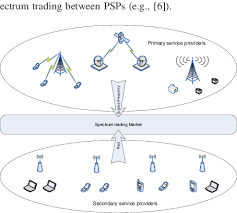V-BLAST (Vertical Bell Labs Layered Space-Time): A Deep Dive into MIMO Technology
telcomatraining.com – With the rapid evolution of wireless communication, Multiple Input Multiple Output (MIMO) technology has become a fundamental component in modern communication systems. One of the most significant advancements in MIMO technology is V-BLAST (Vertical Bell Labs Layered Space-Time), a powerful detection algorithm designed to optimize spatial multiplexing. This article explores the principles, functionality, advantages, and real-world applications of V-BLAST in wireless communication.
Understanding V-BLAST
V-BLAST is an advanced signal processing technique developed by Bell Labs to enhance spectral efficiency and data throughput in MIMO systems. Unlike traditional MIMO schemes, which rely on antenna diversity for performance gains, V-BLAST focuses on spatial multiplexing to transmit multiple data streams simultaneously over multiple antennas. This approach significantly increases the data rate without requiring additional bandwidth or transmission power.
The core principle of V-BLAST involves breaking down the transmission into independent layers, each transmitted through different antennas. At the receiver end, a sophisticated detection algorithm is employed to separate and reconstruct the original signals despite interference and noise.
How V-BLAST Works
V-BLAST utilizes a layered approach to transmit and decode signals efficiently. The process can be summarized in the following steps:
- Spatial Multiplexing: The transmitted data is divided into multiple streams, each mapped onto different antennas.
- Linear Precoding: Signals are processed to minimize interference between the transmitted layers.
- Successive Interference Cancellation (SIC): At the receiver, the strongest signal is detected first, then subtracted from the received mixture, allowing the detection of weaker signals sequentially.
- Nulling and Ordering: The receiver applies linear algebra techniques such as the Zero-Forcing (ZF) or Minimum Mean Square Error (MMSE) algorithm to nullify interference and order the detected signals accordingly.
- Error Correction: Advanced error-correction techniques, such as Maximum Likelihood (ML) detection, further enhance the accuracy of the received data.
By leveraging these techniques, V-BLAST achieves remarkable performance improvements in terms of data rate and reliability.
Advantages of V-BLAST
- Increased Spectral Efficiency: By transmitting multiple data streams simultaneously, V-BLAST maximizes spectrum utilization, making it ideal for high-speed wireless networks.
- Enhanced Data Throughput: The spatial multiplexing approach significantly boosts data rates, allowing for faster and more efficient communication.
- Scalability: V-BLAST is adaptable to different MIMO configurations, making it suitable for various wireless standards, including 4G LTE, 5G, and Wi-Fi 6.
- Improved Performance in Rich Scattering Environments: In environments with multiple reflections and scattering, V-BLAST capitalizes on spatial diversity to maintain robust signal quality.
Challenges and Limitations
Despite its advantages, V-BLAST faces some challenges, including:
- Computational Complexity: The successive interference cancellation process requires significant computational power, making real-time processing challenging.
- Error Propagation: The detection order can lead to error propagation, where incorrect decoding of an early layer affects subsequent layers.
- Sensitivity to Channel Conditions: V-BLAST performs best in rich scattering environments but may struggle in low-rank or line-of-sight (LoS) scenarios.
Real-World Applications of V-BLAST
V-BLAST has been widely adopted in various wireless communication technologies, including:
- 4G and 5G Networks: Cellular networks leverage V-BLAST to enhance data rates and network capacity.
- Wi-Fi and WLAN Technologies: High-speed Wi-Fi systems utilize V-BLAST for improved connectivity in dense environments.
- Satellite and IoT Communications: V-BLAST plays a crucial role in space communications and IoT networks, enabling efficient data transmission over multiple antennas.
Conclusion
V-BLAST is a groundbreaking MIMO technology that significantly enhances wireless communication by maximizing data rates and spectral efficiency. While challenges such as computational complexity and error propagation exist, ongoing advancements in signal processing and hardware capabilities continue to improve V-BLAST’s performance. As wireless technology evolves towards 6G and beyond, V-BLAST will remain a crucial innovation in the quest for faster and more reliable communication systems.







